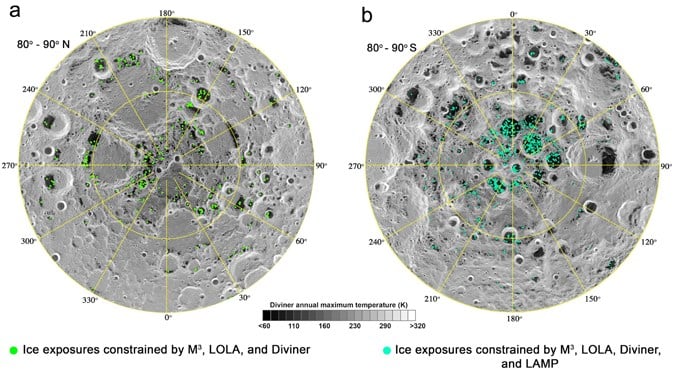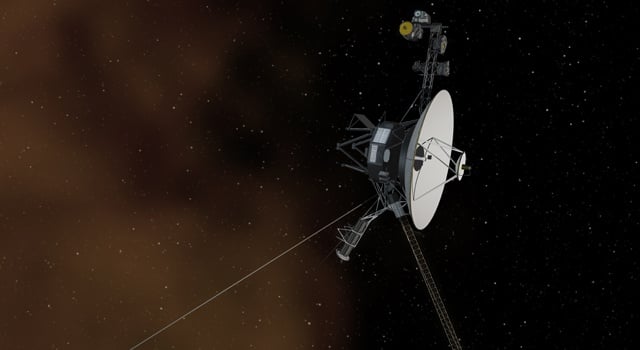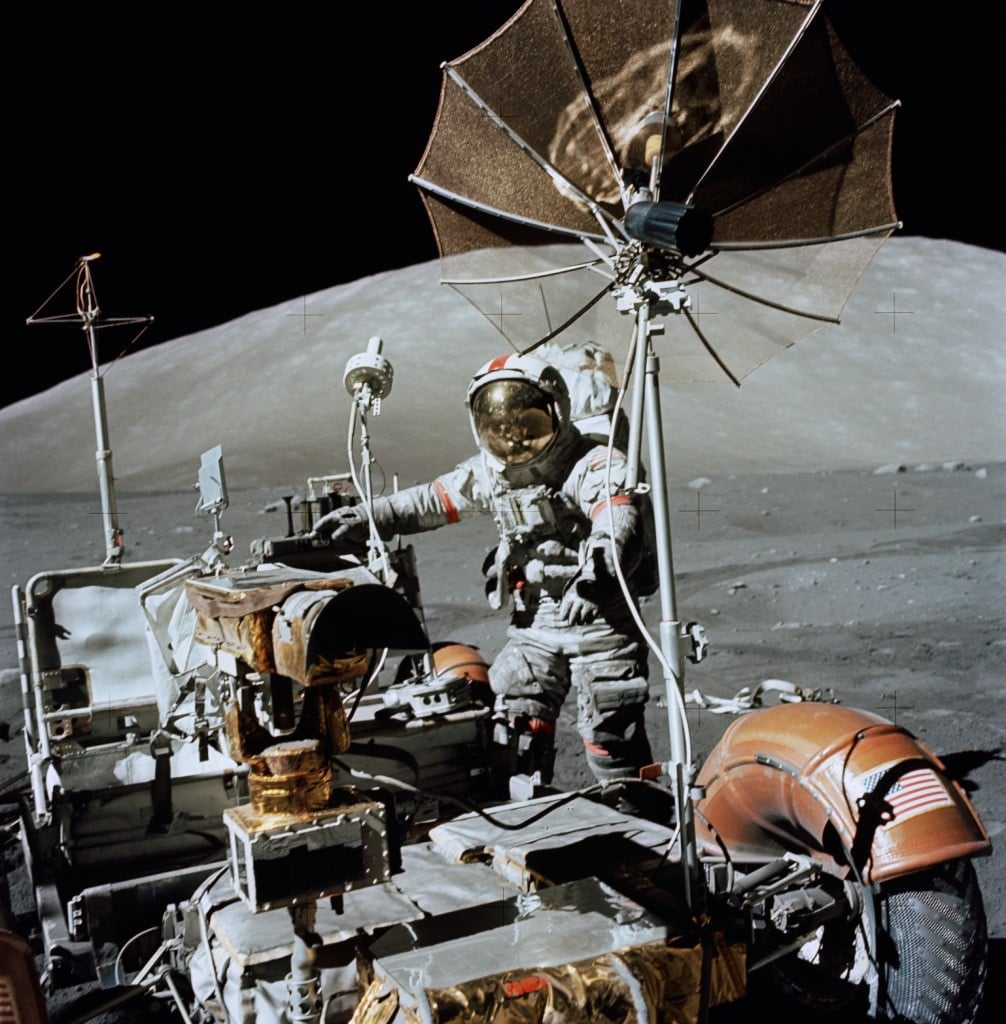We have known that water ice exists on the Moon since 1998. These large deposits are found in the permanently shadowed craters around the polar region. The challenge is how to get it since shadowed craters are not the best place for solar powered vehicles to operate. A team of engineers have identified a design for an ice-mining vehicle powered by americium-241. With a half-life of 432 years, this element is an ideal power source for a vehicle to operate in the dark for several decades.
Ice in the polar regions of the Moon is of vital importance for our future space explorations, not just lunar visits but as we stretch our legs in the Solar System. Its thought to be ancient material deposited by comets or formed by interactions with solar wind. It is expensive to take materials to the Moon so harvesting on site is far more efficient. Ice on the Moon can provide drinking water, oxygen for breaking and even hydrogen for rocket fuel. Surveys suggest something in the region of 600 billion kilograms of ice deposited at the lunar poles.
The challenge facing future lunar harvesting missions is that operations in the permanently shadowed regions (or PSRs as they have been called) cannot be powered by solar panels as is often the case. The environment is cold too, in the region of 40K, that's -233?C and at those temperatures special power considerations are required.
A team of researchers have been exploring the use of Radioisotope Power Systems (RPS) to provide thermal and electrical power systems. These power systems have been used before during deep space missions for example Voyager and New Horizons. They work by generating electricity using the heat that is released from the natural decay of a radioactive isotope usually plutonium-238.
The team led by Marzio Mazzotti from the University of Leicester have explored an ice-mining rover using power generated by the radio activate decay fo Americium-241. It has a half-life of 432 years which means it takes 432 years for half of a sample of Americium to decay. During this time, half of the atoms in the substance will transform into a different element. Using this power source will provide a stable power supply for an ice-mining rover in the darkness of the lunar polar craters for decades.
Using a radioisotope power system is not new however the team came upon the idea that the excess heat that is not used can be used to thermally mine ice from samples of lunar material. The rover would be fitted with a sublimation plate that would turn any ice deposits into a gas which would be collected in a cold trap.
The team developed a model of its Thermal Management System and tested it for icy regolith (the fine dusty lunar surface) material with a water ice content of 0-10 vol %. Their simulations showed that it is possible to mine ice using thermal techniques in the PSR of the Moon using an RPS (I had to really concentrate writing that sentence!) powered lunar rover.
Source : Ice-Mining Lunar Rover using Americium-241 Radioisotope Power Systems
 Universe Today
Universe Today



